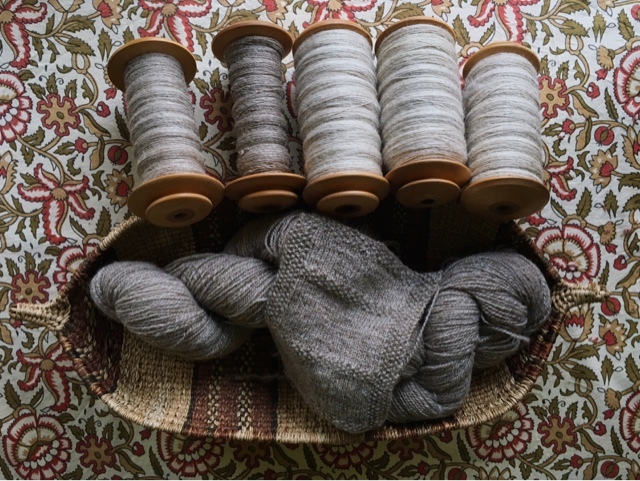You Spin Me Right Round
A few years ago, I bought a Shetland fleece, from Windrush Farm in West Marin County here in Northern California. Having washed it, and brushed it, I'm now doing the final prep work of combing and what's delightfully called "dizzing."
All the wool was sorted by relative lightness or darkness, and I'm spinning it with the goal of producing two distinct yarns -- an off-white, and a pale grey.
Until I know how much yarn this produces, I won't decide what I'm going to knit.
I've been going through a very hard time, over the past few years, and I'm now attempting to climb out of a multi-year black period. There's something remarkably soothing about the process of working with this wool.
The repetitive nature of the work keeps me from gnawing on unpleasant, unhelpful thoughts.
One thing I have been musing on: given the massive amount of work involved in every step of the process of creating cloth, I have undying respect for our pre-industrial ancestors. The act of making clothes without large scale mechanization is unbelievably daunting. It's no wonder the development of large scale textile machinery was called an Industrial Revolution.
(And speaking of Revolutions, I'll write about our BORP Revolution ride as soon as possible. Robb and I are deeply grateful to everyone who supported our fundraising efforts.)


Comments
You can launder that old quilt fairly safely. The danger to the quilt is to pull or stretch it and snap the delicate fabric and stitches. Run warm water in a bathtub, swish Orvis soap in it until it's well incorporated. Drape a bedsheet in the tub and place the quilt on top of it. Gently swish it and let it soak for a day. Drain, fill the tub again (without removing the sheet or quilt) and repeat. Rinse until the water runs clear and press out the water. With a friend, lift the quilt out by using the bedsheet like a hammock. To dry, lay the quilt outside in the sun, bedsheet underneath with another sheet on top. If you do it in summer, it takes a day or two. Or, just enjoy the quilt as is! XOX DoubleSaj
Your yarn is extraordinary. You have such an eye for detail.